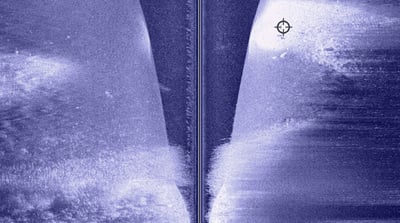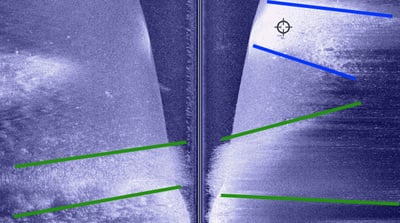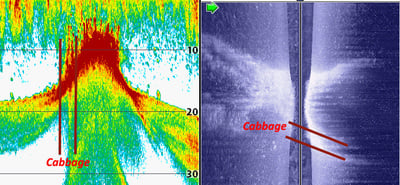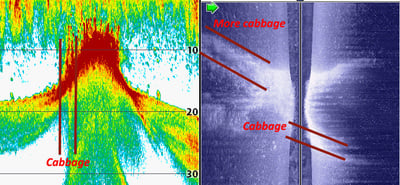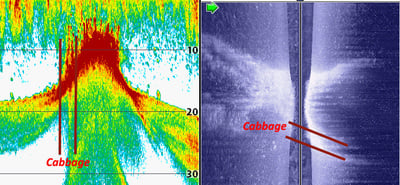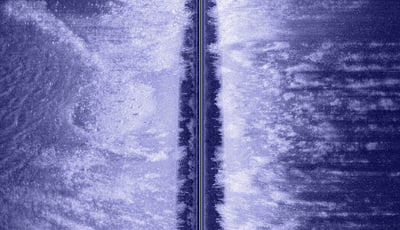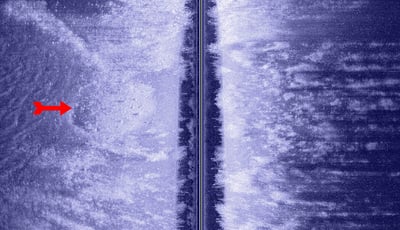One of the most powerful capabilities of Humminbird’s industry-leading Side Imaging technology is its ability to clearly identify structure edges, or said another way, transitions from one type of structure/bottom content to another. I thought we’d take a quick look at a piece of structure that has several such transitions, and see how easily Humminbird’s Side Imaging locators can identify these edges.
Check out the screen capture below. I collected it while moving off a shallow, weedy bar into deeper water. The depth at the top of the screen capture is ~ 50 feet, while it is more like 3-5 at the bottom.
